Development of Vegetation-Pervious Concrete in Grid Beam System for Soil Slope Protection
Abstract
:1. Introduction
2. Materials and Methods
2.1. Materials and Mix Proportions
2.2. Sample Preparation
2.3. Test Methods
2.3.1. Physical and Mechanical Properties
(a) Porosity
- (1)
- The sample was dried in an oven at 60 °C until the mass did not change, and the mass (M1) was measured.
- (2)
- The diameter and height of the sample were measured, and the volume of the sample (Vcylinder) was calculated.
- (3)
- The samples will be soaked in water for 2 h for getting a saturated station. The mass of saturated sample (M2) was measured by a hydrostatic balance method as shown in Figure 3.
- (4)
- The porosity (P) of the sample was calculated using the following equation:where P is the porosity of the sample, %; M1 is the sample mass in air, gram; M2 is the mass of the sample in water, gram, ϱwater is the water density, g/mm3; and Vcylinder is the volume of the sample, mm3.P = (M1 − M2)/(ϱwater − Vcylinder) × 100%,
(b) Permeability
- (1)
- The diameter (D) and thickness (L) of the cylindrical samples were measured twice using callipers, and the data were averaged to 0.1 cm. Then, the sample surface area (A) was calculated.
- (2)
- The sidewall of the cylinder was sealed by a watertight material (epoxy). The epoxy was brushed on the sidewall of the samples evenly and the thickness of epoxy was more than 1 mm. The water was allowed to penetrate the sample from the upper and lower surfaces. After the watertight material was cured, the sample was placed in water to a water-saturated state before the test.
- (3)
- The sample was not removed from the water until the permeability test was performed. The sample was connected with the permeable tube shown in Figure 4a and placed in a water tank; and the water supply valve was subsequently turned on. When the water overflowed from the overflow hole, the speed of the water supply was adjusted to maintain a certain level of permeability. After water stability was attained for the overflow hole and permeable tube, a graduated flask was used to collect water from the outlet of the water tank; the time t (seconds) and quantity of water outflow (Q) were measured three times, and the data were averaged.
- (4)
- The distance (H), which was accurate to 0.1 cm, between the water level in the water tank and the water level of the permeable tube was measured by a rule.
- (5)
- Permeability coefficient (K) of the sample can be calculated as the following equation:where K is the permeability coefficient of the tested sample, mm/s; Q is the quantity of water outflow within time t, mL; L is the thickness of the sample, mm; A is the upper surface of the sample, mm2; H is the distance between the levels, mm; and t is the testing time, s.K = Q × L/(A × H × t),
(c) Compressive Strength
(d) Elastic Modulus
2.3.2. Chemical Properties
2.3.3. Vegetation Test in Laboratory
3. Results and Discussion
3.1. Porosity, Permeability and Mechanical Properties
3.2. Alkalinity of the Concrete
3.3. Comparison of Vegetation
4. Conclusions
- (1)
- The compressive strength and elastic modulus of the vegetation-pervious concretes increased with the increase of admixture, but the effect of admixture on elastic modulus was less significant compared to the compressive strength. The result showed that vegetation-pervious concretes with admixture showed lower alkalinity and higher strength. Therefore, the admixture used in this study was not only able to decrease the alkalinity of cement effectively but also improve the strength to as high as 25.2 MPa at an admixture content of 3.6%.
- (2)
- In comparison, the alkalinity of the cement cube samples with admixture was lower than that of the cement paste mixes without admixture. When the admixture content between 2.4% to 3.6% was added, the strength of vegetation-pervious concrete was found improved, whereas its alkalinity was reduced.
- (3)
- Compared with a traditional method, the developed vegetation-pervious concrete slope protection method can be adapted for different vegetation requirements and slope gradients by adjusting alkalinity and porosity of the concrete.
- (4)
- Based on the test results of alkalinity, permeability coefficient and mechanical properties of the studied concretes, the vegetation-pervious concretes have demonstrated their potential suitability when using in continuous grid beam structure for slope protection.
Acknowledgments
Author Contributions
Conflicts of Interest
References
- Cui, H.; Liao, W.; Memon, S.; Dong, B.; Tang, W. Thermophysical and mechanical properties of hardened cement paste with microencapsulated phase change materials for energy storage. Materials 2014, 7, 8070–8087. [Google Scholar] [CrossRef]
- Memon, S.; Liao, W.; Yang, S.; Cui, H.; Shah, S. Development of composite PCMs by incorporation of paraffin into various building materials. Materials 2015, 8, 499–518. [Google Scholar] [CrossRef]
- Tang, H.; Shen, S.Y. Landscape regeneration strategy of waste quarries in urban area. Appl. Mech. Mater. 2013, 357–360, 2018–2022. [Google Scholar] [CrossRef]
- Jaboyedoff, M.; Michoud, C.; Derron, M.; Voumard, J.; Leibundgut, G.; Sudmeier-Rieux, K.; Nadim, F.; Leroi, E. Human-induced landslides: Toward the analysis of anthropogenic changes of the slope environment. In Landslides and Engineered Slopes. Experience, Theory and Practice: Proceedings of the 12th International Symposium on Landslides, Napoli, Italy, 12–19 June 2016; CRC Press (Taylor and Francis Group): Boca Raton, FL, USA, 2016; p. 217. [Google Scholar]
- Bao, X.; Ye, B.; Ye, G.; Zhang, F. Co-seismic and post-seismic behavior of a wall type breakwater on a natural ground composed of liquefiable layer. Nat. Hazards 2016, 83, 1799–1819. [Google Scholar] [CrossRef]
- Xiao, H.; Huang, J.; Qiang, I.; Ma, I.J.; Wan, I.L.; Peng, Q.; Rezaeimalek, S. Experimental study on the soil mixture to promote vegetation for slope protection and landslide prevention. Landslides 2015, 2, 1–11. [Google Scholar] [CrossRef]
- Duan, L.; Huang, M.; Zhang, L. Differences in hydrological responses for different vegetation types on a steep slope on the Loess Plateau, China. J. Hydrol. 2016, 537, 356–366. [Google Scholar] [CrossRef]
- Stokes, A.; Spanos, I.; Norris, J.E.; Cammeraat, E. Eco-and Ground Bio-Engineering: The Use of Vegetation to Improve Slope Stability; Springer: Dordrecht, The Netherlands, 2007; pp. 1990–1993. [Google Scholar]
- Schwarz, M.; Preti, F.; Giadrossich, F.; Lehmann, P.; Or, D. Quantifying the role of vegetation in slope stability: A case study in Tuscany (Italy). Ecol. Eng. 2010, 36, 285–291. [Google Scholar] [CrossRef]
- Dani, A.; Alliu, E.; Togni, M.; Preti, F. Spatio-temporal vegetation effects on slope stability. In Proceedings of the EGU General Assembly Conference, Vienna, Austria, 2–7 May 2010.
- González-Ollauri, A.; Mickovski, S.B. Integrated model for the hydro-mechanical effects of vegetation against shallow landslides. EQA Int. J. Environ. Qual. 2014, 13, 37–59. [Google Scholar]
- Lindsay, J.; Dhun, K. Modelling surface drainage patterns in altered landscapes using LiDAR. Int. J. Geogr. Inf. Sci. 2015, 29, 397–411. [Google Scholar] [CrossRef]
- Ni, L.; Suleiman, M.T.; Raich, A. Behavior and soil–structure interaction of pervious concrete ground-improvement piles under lateral loading. J. Geotech. Geoenviron. Eng. 2015, 142. [Google Scholar] [CrossRef]
- Tsang, C.; Shehata, M.H.; Lotfy, A. Optimizing a test method to evaluate resistance of pervious concrete to cycles of freezing and thawing in the presence of different deicing salts. Materials 2016, 9, 20. [Google Scholar] [CrossRef]
- Anderson, I.; Walsh, D.; Oka, L.; Dewoolkar, M.M.; Limberg, S.; Sevi, A.; Schmeckpeper, E. Laboratory Performance of Pervious Concrete Subjected to Deicing Salts and Freeze-Thaw; The National Academies of Sciences, Engineering, and Medicine: Washington, DC, USA, 2015. [Google Scholar]
- Chen, Y.; Wang, K.; Wang, X.; Zhou, W. Strength, fracture and fatigue of pervious concrete. Constr. Build. Mater. 2013, 42, 97–104. [Google Scholar] [CrossRef]
- Chen, F.; Xu, Y.; Wang, C.; Mao, J. Effects of concrete content on seed germination and seedling establishment in vegetation concrete matrix in slope restoration. Ecol. Eng. 2013, 58, 99–104. [Google Scholar] [CrossRef]
- Shi, B.; Kong, X. Study on the vegetation restoration method to reinforce slope. In Proceedings of the China International Conference, Shandong, China, 25–27 July 2016; p. 152.
- Sata, V.; Tangpagasit, J.; Jaturapitakkul, C.; Chindaprasirt, P. Effect of W/B ratios on pozzolanic reaction of biomass ashes in Portland cement matrix. Cem. Concr. Compos. 2012, 34, 94–100. [Google Scholar] [CrossRef]
- Juenger, M.C.; Siddique, R. Recent advances in understanding the role of supplementary cementitious materials in concrete. Cem. Concr. Res. 2015, 78, 71–80. [Google Scholar] [CrossRef]
- Ćosić, K.; Korat, L.; Ducman, V.; Netinger, I. Influence of aggregate type and size on properties of pervious concrete. Constr. Build. Mater. 2015, 78, 69–76. [Google Scholar] [CrossRef]
- Torres, A.; Hu, J.; Ramos, A. The effect of the cementitious paste thickness on the performance of pervious concrete. Constr. Build. Mater. 2015, 95, 850–859. [Google Scholar] [CrossRef]
- Wong, N.H.; Chen, Y.; Ong, C.L.; Sia, A. Investigation of thermal benefits of rooftop garden in the tropical environment. Build. Environ. 2003, 38, 261–270. [Google Scholar] [CrossRef]
- Dodson, V.H. Concrete Admixtures; Springer Science & Business Media: Berlin, Germany, 2013. [Google Scholar]
- BSI Standards Publication. Cement—Part 1: Composition, Specifications and Conformity Criteria for Common Cements; BS EN 197-1 CEM I; Standards Institute: London, UK, 2000. [Google Scholar]
- China Standards Publication. Standard for Test Method of Mechanical Properties on Ordinary Concrete; GB/T 50081-2002; China Standards Press: Beijing, China, 2002. [Google Scholar]
- China Standards Publication. Water Permeabile Brick. National Development and Reform Commission; JC/T 945-2005; China Standards Press: Beijing, China, 2005. [Google Scholar]
- Vichit-Vadakan, W.; Carino, N.J.; Mullings, G.M. Effect of elastic modulus of capping material on measured strength of high-strength concrete cylinders. Cem. Concr. Aggreg. 1998, 20, 227–234. [Google Scholar]
- Vandegrift, D. The Effect of Test Cylinder Size on the Compressive Strength of Sulfur Capped Concrete Specimens; Highway Research Center and Department of Civil Engineering at Auburn University: Auburn, AL, USA, 2006. [Google Scholar]
- Kang, K.; Kim, W.J.; Park, S.J. Application of activated carbon and crushed concrete as capping material for interrupting the release of nitrogen, phosphorus and organic substance from reservoir sediments. J. Korean Soc. Agric. Eng. 2016, 58, 1–9. [Google Scholar] [CrossRef]
- BSI Standards Publication. Method for Determination of Flexural Strength; BS 1881: Part 118; Standards Institute: London, UK, 1983. [Google Scholar]
- Meteorological Bureau of Shenzhen Municipality. Meteorological Information. Available online: http://www.szmb.gov.cn/ (access on 23 January 2017).
- Kayhanian, M.; Anderson, D.; Harvey, J.T.; Jones, D.; Muhunthan, B. Permeability measurement and scan imaging to assess clogging of pervious concrete pavements in parking lots. J. Environ. Manag. 2012, 95, 114–123. [Google Scholar] [CrossRef] [PubMed]
- Qin, Y.; Yang, H.; Deng, Z.; He, J. Water permeability of pervious concrete is dependent on the applied pressure and testing methods. Adv. Mater. Sci. Eng. 2015, 2015, 404136. [Google Scholar] [CrossRef]
- Martin, W.D.; Kaye, N.B.; Putman, B.J. Impact of vertical porosity distribution on the permeability of pervious concrete. Constr. Build. Mater. 2014, 59, 78–84. [Google Scholar] [CrossRef]
- Kodag, P.; Madane, V.; Kumar, A.; Mali, A.; Mahajan, O.; Alam, M.T. To study compressive strength and permeability of pervious concrete by varying mix proportions. Imp. J. Interdiscip. Res. 2016, 2, 1674–1676. [Google Scholar]
- Gaedicke, C.; Torres, A.; Huynh, K.C.; Marines, A. A method to correlate splitting tensile strength and compressive strength of pervious concrete cylinders and cores. Constr. Build. Mater. 2016, 125, 271–278. [Google Scholar] [CrossRef]
- Sata, V.; Ngohpok, C.; Chindaprasirt, P. Properties of pervious concrete containing high-calcium fly ash. Comput. Concr. 2016, 17, 337–351. [Google Scholar] [CrossRef]
- Joshaghani, A.; Ramezanianpour, A.A.; Ataei, O.; Golroo, A. Optimizing pervious concrete pavement mixture design by using the Taguchi method. Constr. Build. Mater. 2015, 101, 317–325. [Google Scholar] [CrossRef]
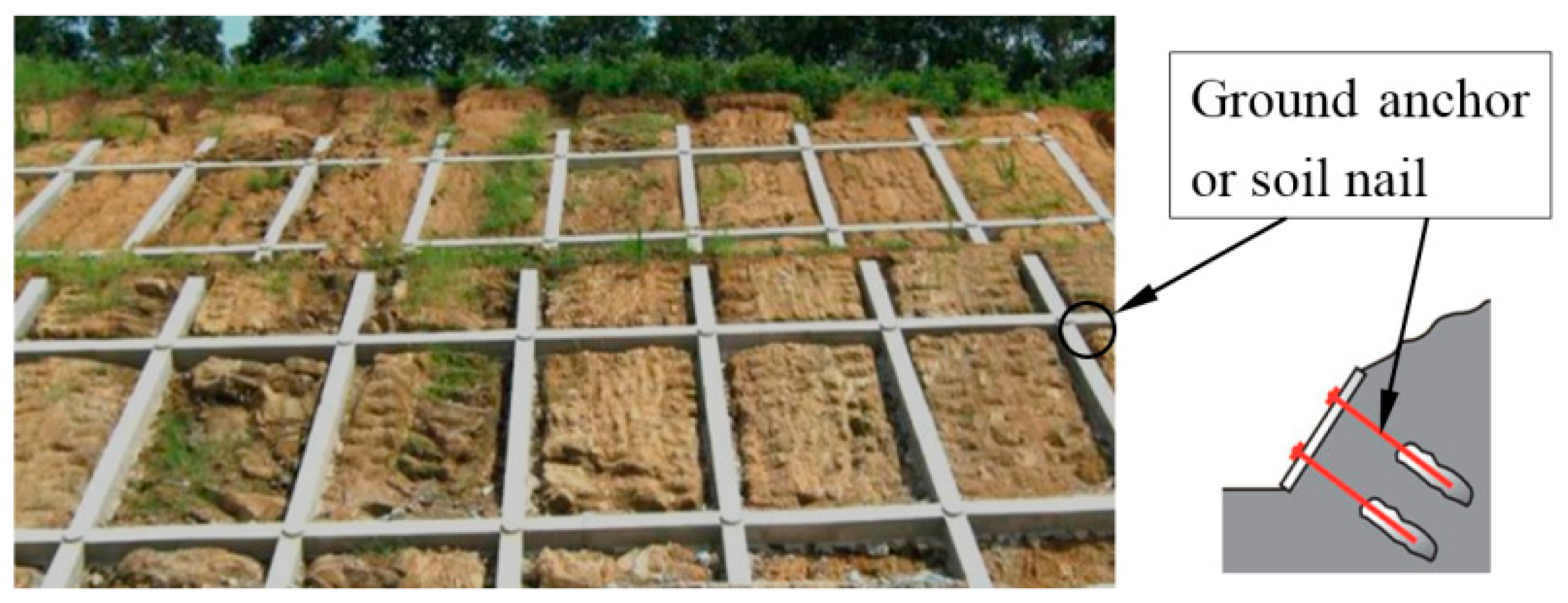
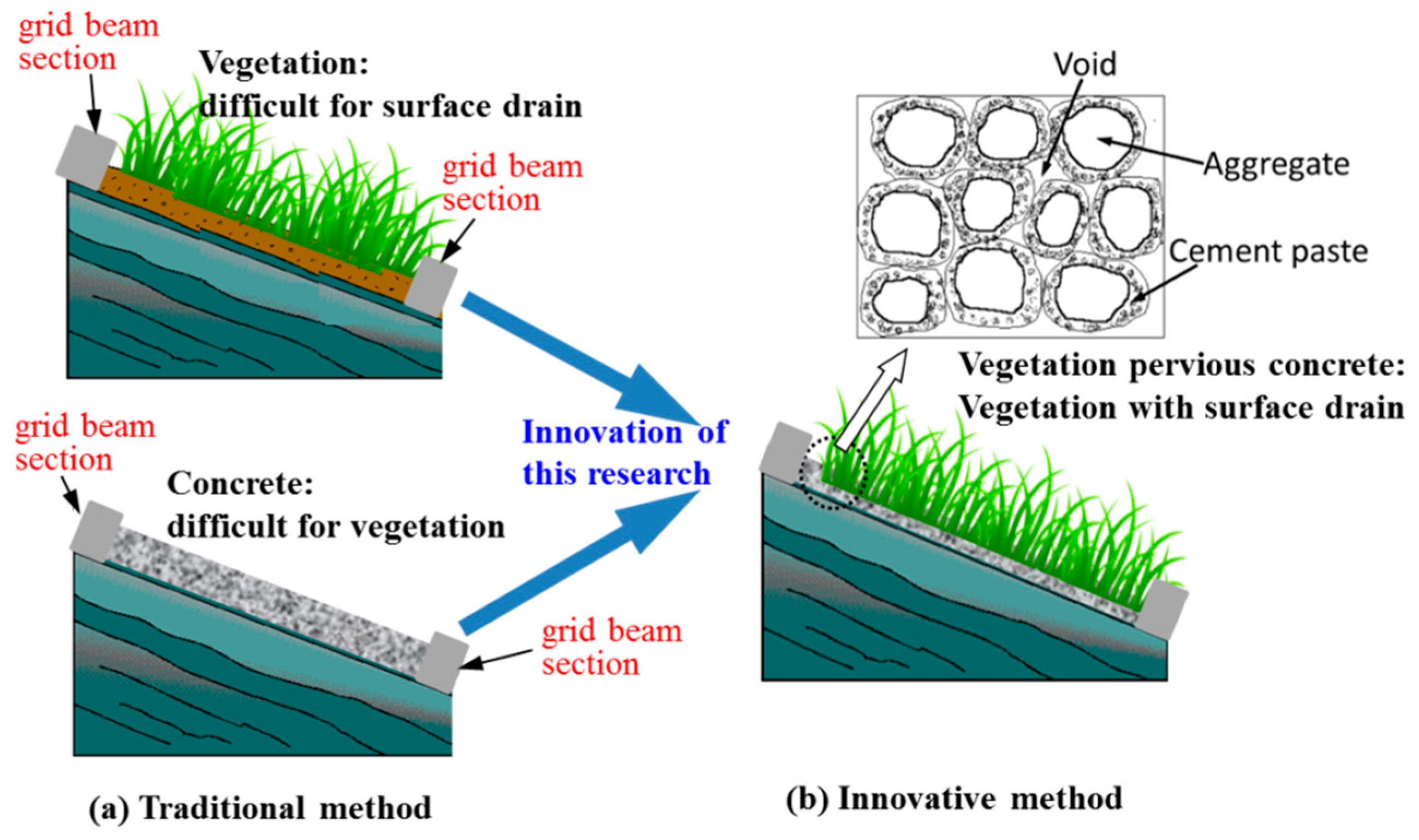
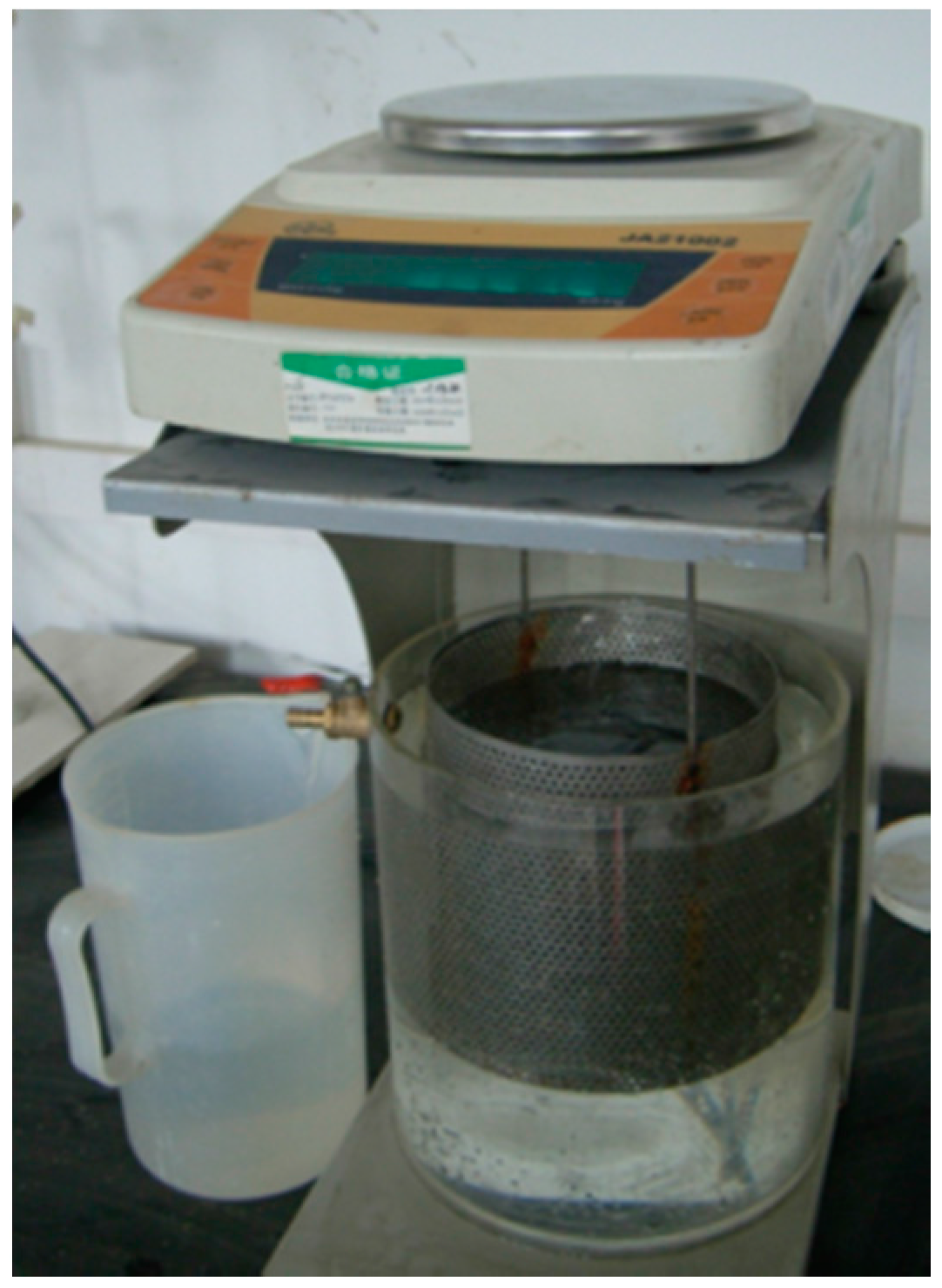
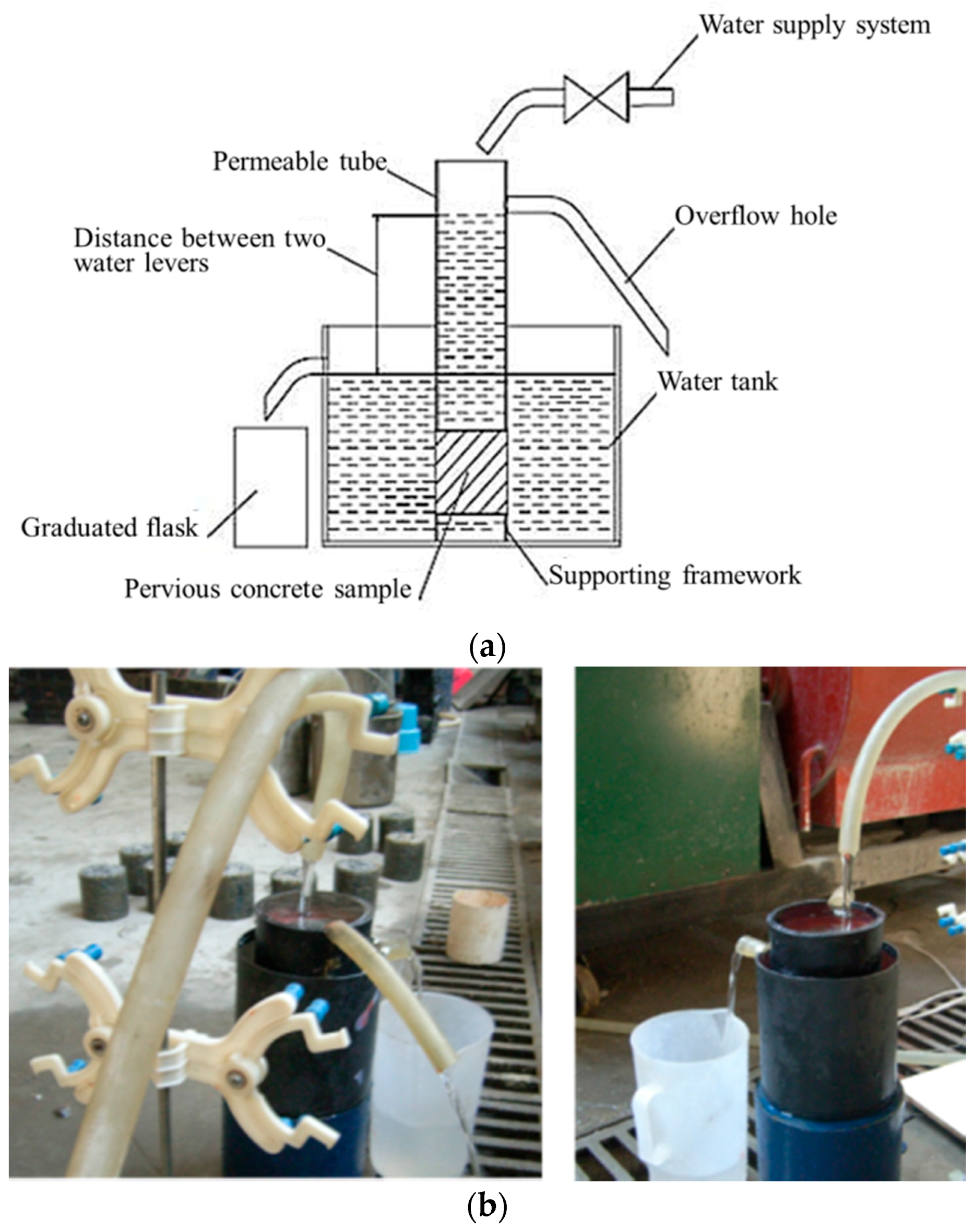
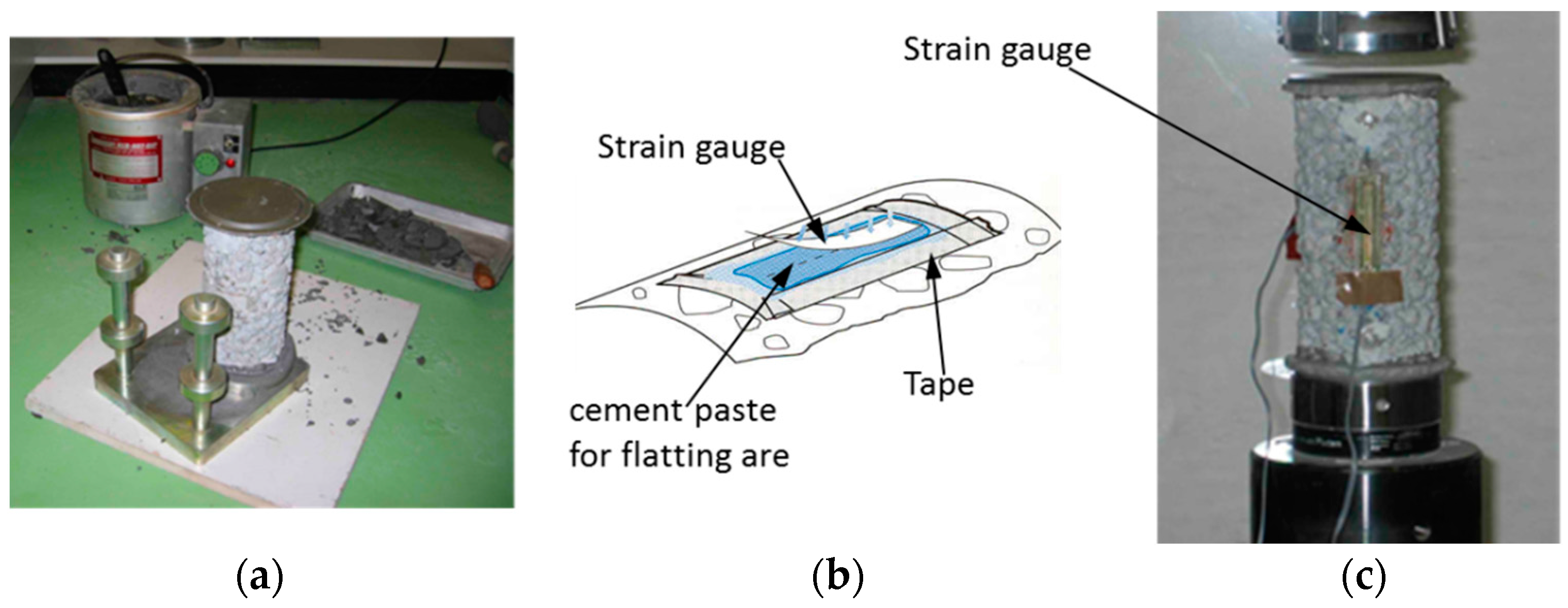
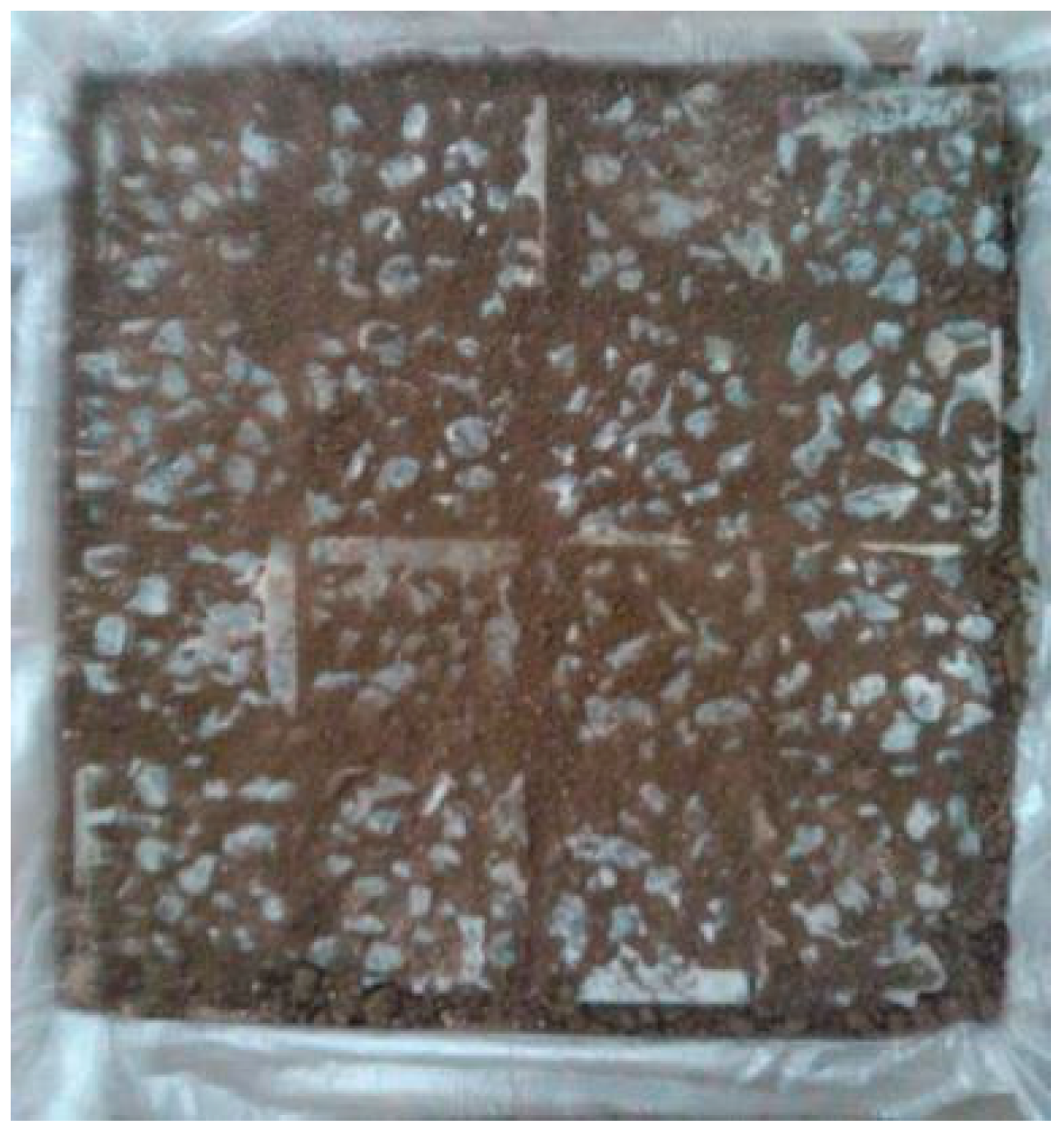
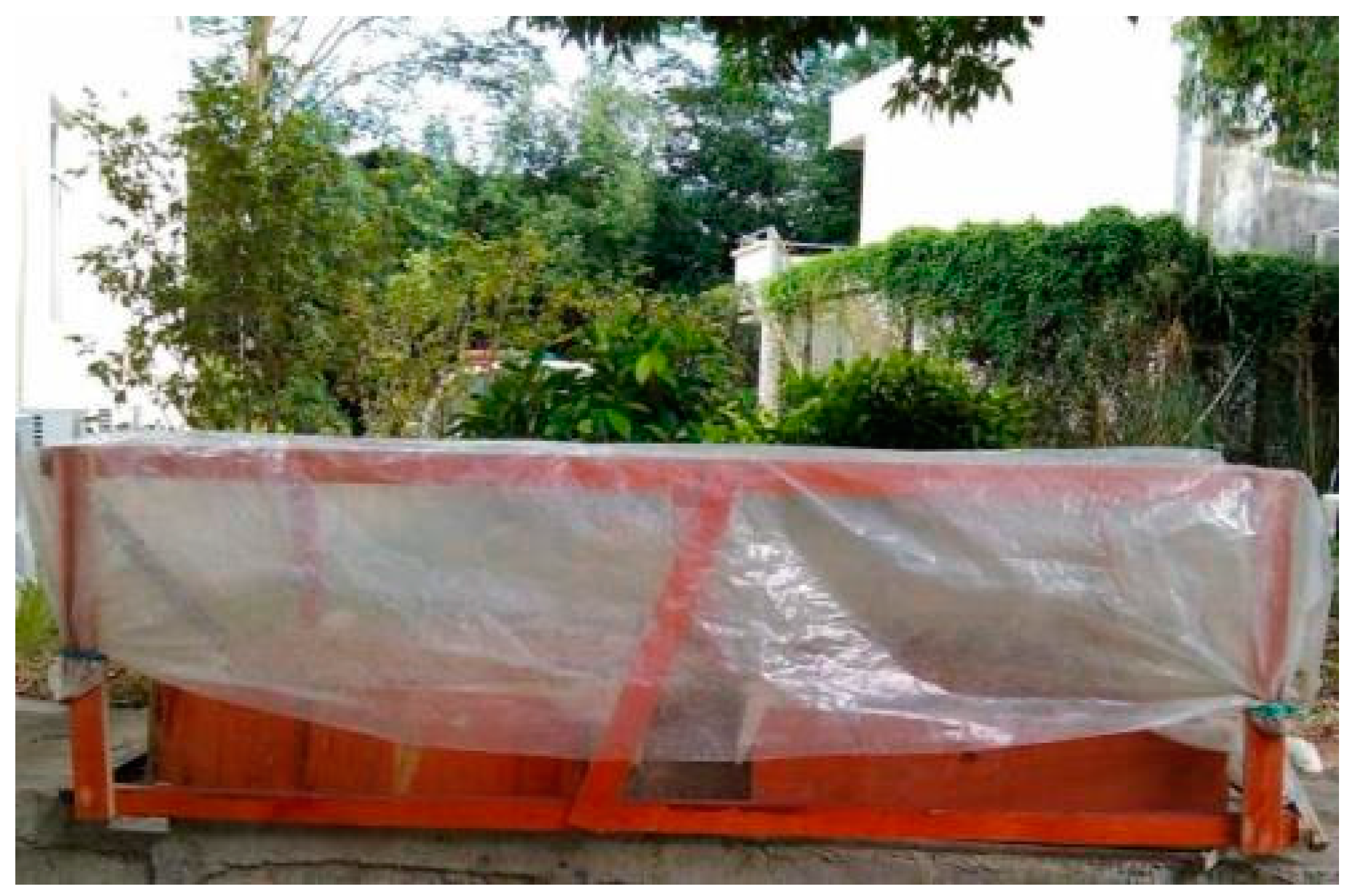
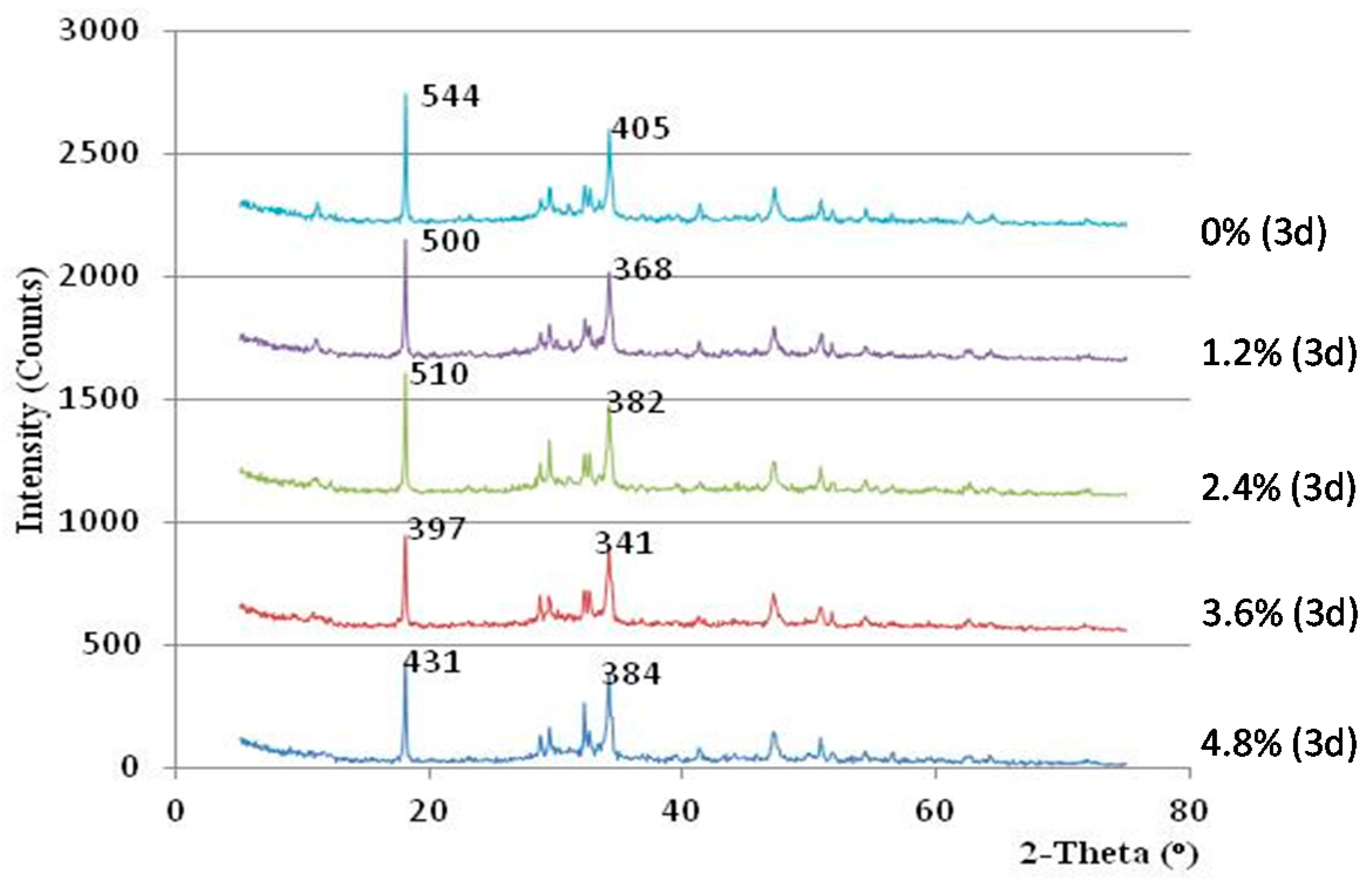
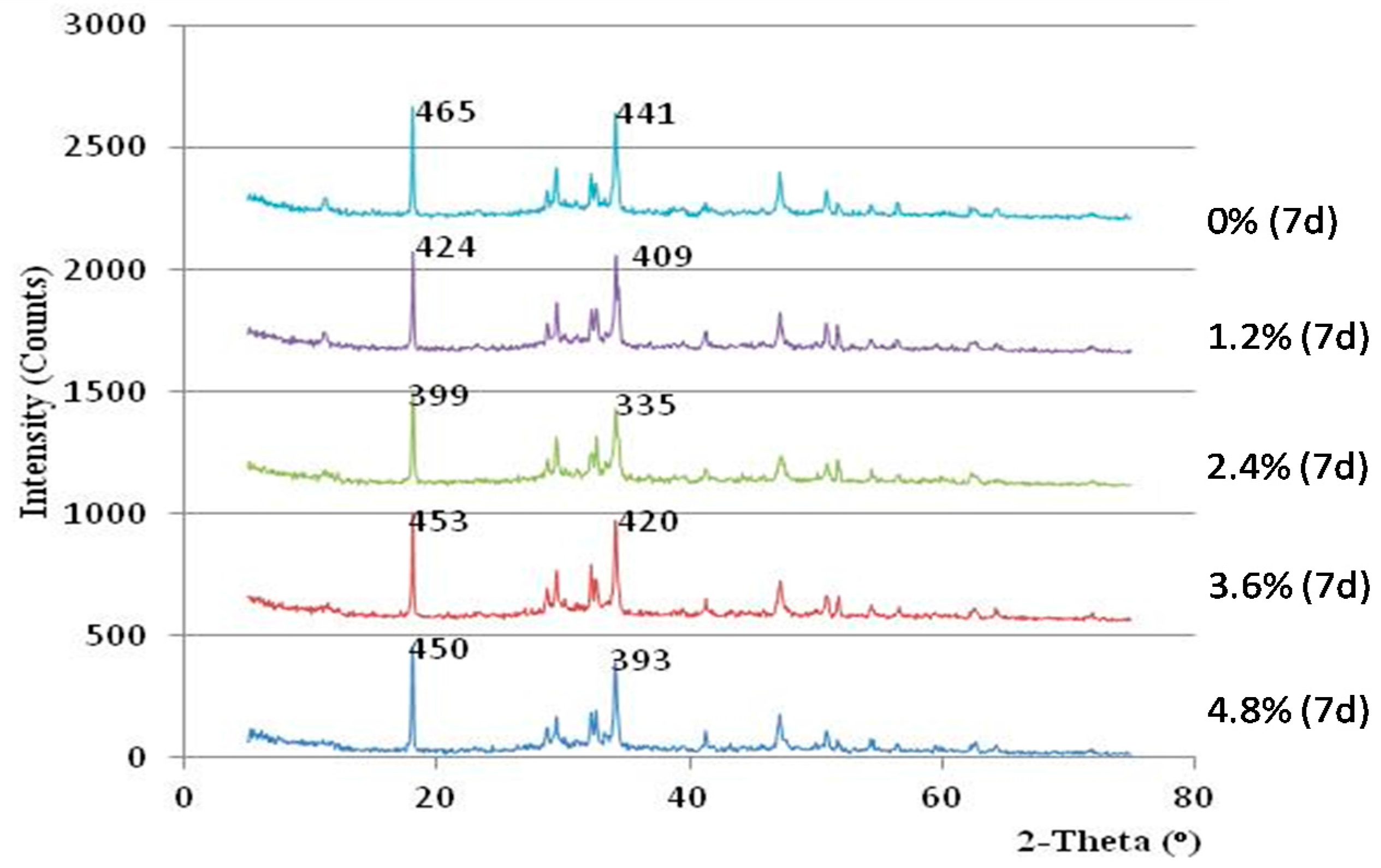

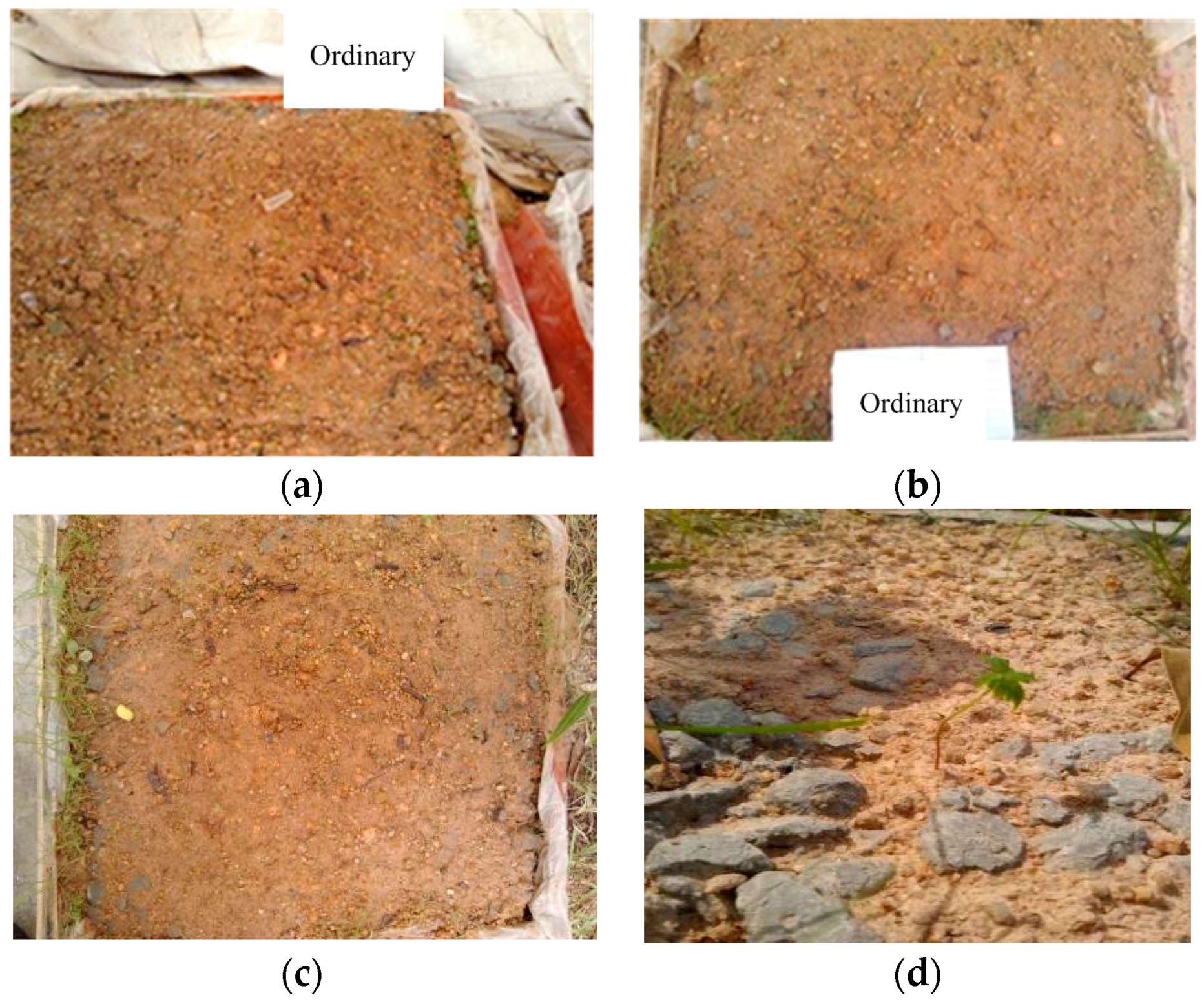


| Ingredient | Ratio (wt %) | Function |
|---|---|---|
| Silica fume (SiO2) | 37.8 | To react with Ca(OH)2 and producing more calcium silicate hydrate (C–S–H) gel in cement paste to reduce alkalinity and to fill the pores in cement paste. |
| Ultra-fine calcium carbonate (CaCO3) | 7.6 | To fill the fine pores in cement paste with an inert material so that the cement paste becomes denser and reduces the Ca(OH)2 dissolution. |
| Polycarboxylate-type superplasticizer | 7.5 | To reduce water usage of cement paste and improve strength, to reduce the consumption of cement and reduce alkalinity. |
| Sodium Nitrite (NaNO2) | 2.3 | To improve the viscosity of the cement paste to enable the cement paste to effectively attach to the aggregate surface and improve the early strength of cement paste. |
| Polyacrylamide (–CH2CHCONH2–) | 0.4 | A water retainer to improve the viscosity of the cement paste. |
| Water | 44.4 | As the solvent in the admixture |
| Oxides (wt %) | CaO | SiO2 | Al2O3 | Fe2O3 | K2O | MgO | TiO2 | Si/Ca |
|---|---|---|---|---|---|---|---|---|
| OPC | 64.6 | 21.10 | 5.90 | 3.10 | - | 1.00 | - | 0.327 |
| Group Number | Ratio of Water to Cement | Admixture RCA Dosage (wt % of Cement) | Mix Proportion | ||||
|---|---|---|---|---|---|---|---|
| Water Content in the Admixture (kg) | Water (kg) | Cement (kg) | Coarse Aggregate (kg) | Admixture RCA (kg) | |||
| VPC-0 | 0.35 | 0% | 0 | 105 | 300 | 1600 | 0 |
| VPC-12 | 0.35 | 1.2% | 1.6 | 103.4 | 300 | 1600 | 3.6 |
| VPC-24 | 0.35 | 2.4%, | 3.2 | 101.8 | 300 | 1600 | 7.2 |
| VPC-36 | 0.35 | 3.6% | 4.8 | 100.2 | 300 | 1600 | 10.8 |
| VPC-48 | 0.35 | 4.8% | 6.4 | 98.6 | 300 | 1600 | 14.4 |
| Categories | Sample Type and Size | Sample Number/Group |
|---|---|---|
| Porosity | Cylinder, 100 mm (D) × 100 mm (H) | 3 samples |
| Compressive strength | Cube, 100 mm × 100 mm × 100 mm | 3 samples |
| Elastic modulus | Cylinder, 100 mm (D) × 200 mm (H) | 3 samples |
| Permeability | Cylinder, 100 mm (D) × 50 mm (H) | 3 samples |
| Group Number | 28 Days Porosity P (%) | 28 Days Permeability Coefficient K (mm/s) | Compressive Strength (MPa) | Elastic Modulus (GPa) | ||||||||||||
|---|---|---|---|---|---|---|---|---|---|---|---|---|---|---|---|---|
| 3 Days | 7 Days | 14 Days | 28 Days | 14 Days | 28 Days | |||||||||||
| Mean | SD | Mean | SD | Mean | SD | Mean | SD | Mean | SD | Mean | SD | Mean | SD | Mean | SD | |
| VPC-0 | 23.4 | 1.91 | 18.7 | 0.67 | 10.7 | 0.37 | 13.1 | 1.10 | 14.8 | 0.68 | 15.7 | 0.98 | 19.7 | 0.67 | 20.1 | 0.81 |
| VPC-12 | 23.1 | 1.10 | 18.5 | 0.59 | 16.6 | 0.51 | 19.0 | 0.87 | 20.9 | 1.16 | 21.3 | 1.21 | 21.1 | 0.90 | 21.6 | 0.34 |
| VPC-24 | 23.1 | 1.84 | 18.1 | 0.56 | 19.0 | 0.43 | 20.9 | 0.41 | 21.2 | 0.94 | 22.4 | 0.79 | 20.9 | 1.06 | 21.8 | 0.92 |
| VPC-36 | 22.9 | 0.96 | 18.3 | 0.70 | 21.6 | 0.80 | 23.1 | 0.62 | 23.9 | 1.11 | 25.2 | 0.91 | 21.5 | 0.89 | 22.3 | 0.89 |
| VPC-48 | 22.1 | 1.39 | 17.9 | 0.59 | 20.0 | 0.69 | 22.0 | 0.81 | 23.3 | 0.31 | 24.8 | 0.68 | 22.1 | 0.94 | 22.7 | 1.03 |
© 2017 by the authors. Licensee MDPI, Basel, Switzerland. This article is an open access article distributed under the terms and conditions of the Creative Commons Attribution (CC BY) license ( http://creativecommons.org/licenses/by/4.0/).
Share and Cite
Bao, X.; Liao, W.; Dong, Z.; Wang, S.; Tang, W. Development of Vegetation-Pervious Concrete in Grid Beam System for Soil Slope Protection. Materials 2017, 10, 96. https://doi.org/10.3390/ma10020096
Bao X, Liao W, Dong Z, Wang S, Tang W. Development of Vegetation-Pervious Concrete in Grid Beam System for Soil Slope Protection. Materials. 2017; 10(2):96. https://doi.org/10.3390/ma10020096
Chicago/Turabian StyleBao, Xiaohua, Wenyu Liao, Zhijun Dong, Shanyong Wang, and Waiching Tang. 2017. "Development of Vegetation-Pervious Concrete in Grid Beam System for Soil Slope Protection" Materials 10, no. 2: 96. https://doi.org/10.3390/ma10020096
APA StyleBao, X., Liao, W., Dong, Z., Wang, S., & Tang, W. (2017). Development of Vegetation-Pervious Concrete in Grid Beam System for Soil Slope Protection. Materials, 10(2), 96. https://doi.org/10.3390/ma10020096








